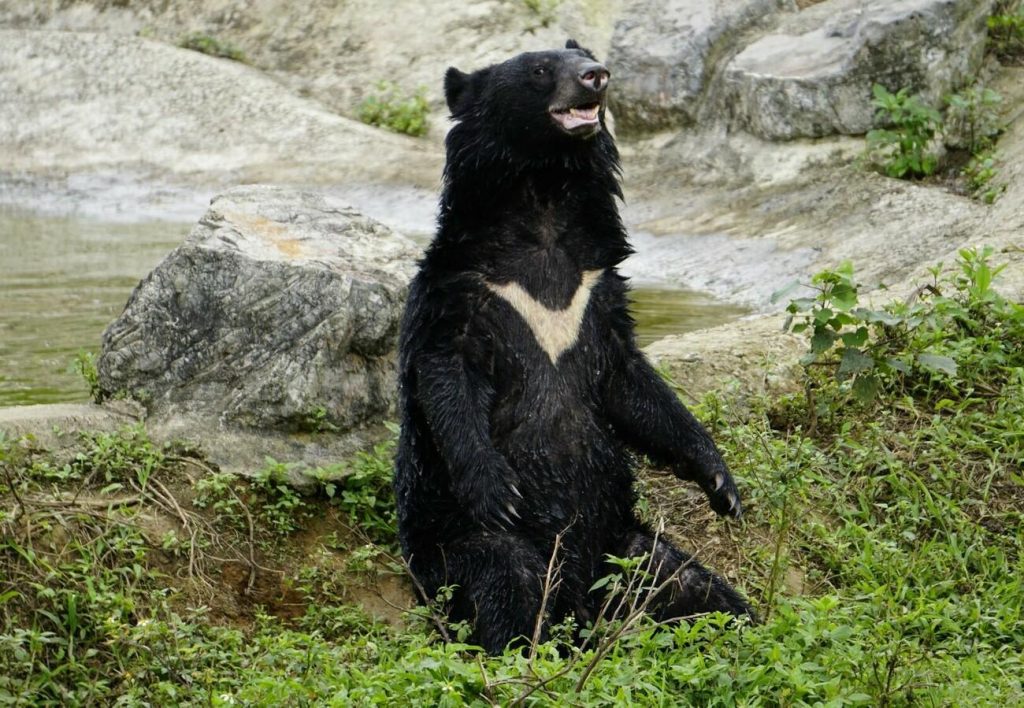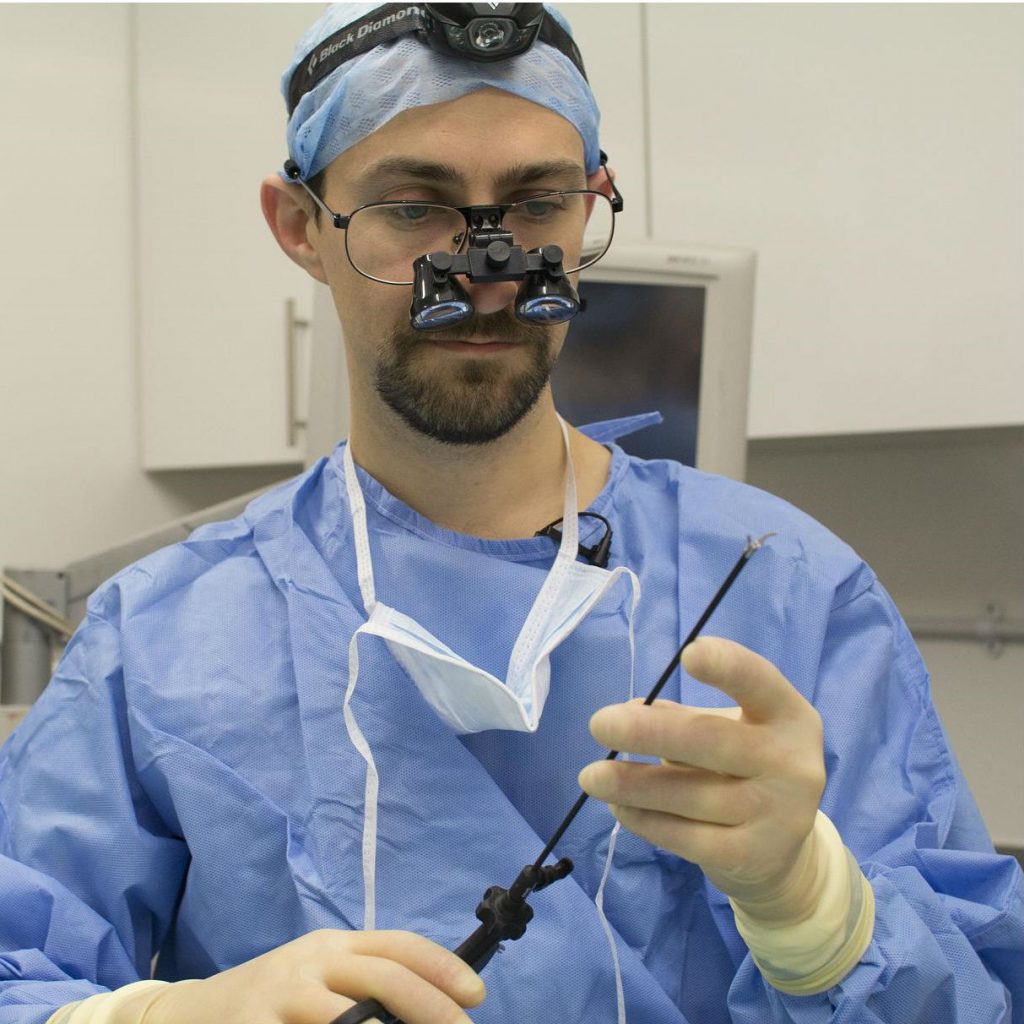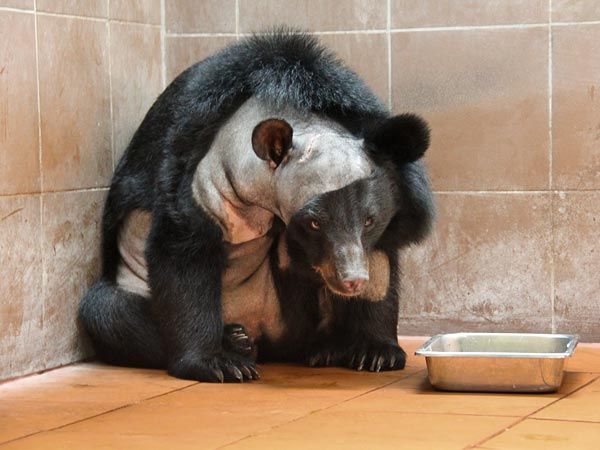The bear, named Champa, lived most of her life at a sanctuary run by Free the Bears, an Australian nonprofit group. About 20 miles (32 kilometers) south of the city of Luang Prabang, the sanctuary protects bears that Lao officials have rescued from wildlife traffickers. The Asiatic black bear, or moon bear, whose bile is considered a valuable ingredient in traditional Chinese and Korean medicine, is listed as vulnerable on the IUCN Red List of Threatened Species.

Rescued as a cub, Champa stood out from the start: She had a protruding forehead and had trouble socializing with the other bears at the sanctuary. Over time, her growth slowed, her behavior became more erratic, and her vision faded.
Sanctuary staff and veterinarians suspected hydrocephalus, or “water on the brain,” a disease that strikes humans as well as animals. It’s most commonly caused by the blockage or overproduction of cerebrospinal fluid in the brain’s cavities.
So Free the Bears called on Pizzi, a veterinary surgeon who works in Scotland at the Edinburgh Zoo and also at a national wildlife rescue center. Pizzi uses a technique called “keyhole,” or laparoscopic surgery, in which surgery is performed through a small incision and with the help of a camera.

He had operated on seals, reindeer, jaguars, and other species. No one had ever done brain surgery on a bear, though, and the risks were significant—but, Pizzi and Free the Bears decided, preferable to the agonizing death Champa would suffer if untreated.
The six-hour procedure began on the morning of February 25, 2013. Pizzi drilled a small hole behind one of the sedated bear’s ears, using an ultrasound probe to confirm that Champa was in fact hydrocephalic. Pizzi then inserted a thin tube through the hole into the brain and, guided by the camera, threaded the tube under her skin to her abdomen. The tube, which would remain in place indefinitely, was designed to drain excess cerebrospinal fluid into the abdominal cavity, where it could be easily absorbed into the body.
The operation was completed by 4 p.m., and veterinarians kept watch on Champa through the night. By 8 a.m. next morning, said Free the Bears chief executive Matt Hunt, Champa was awake and “looking like a very different bear.” Before the operation, her swollen head had weighed down her neck, but now she could raise her head to look directly at sanctuary staff. “There was a lot more recognition,” said Hunt. “We can’t know if her vision is fully recovered, but everyone certainly believes her vision has improved.”

Six weeks after the operation, Champa was markedly more active and more social with other bears, and she was gaining weight. She would always have some brain damage, since the accumulated fluid did cause permanent harm. And she would remain in captivity. But her relief was obvious.
“Operating on one bear won’t save bears from extinction, and making life better for one bear won’t change the world,” said Pizzi. “But the world of that one bear is changed forever.”
According to nationalgeographic.com












